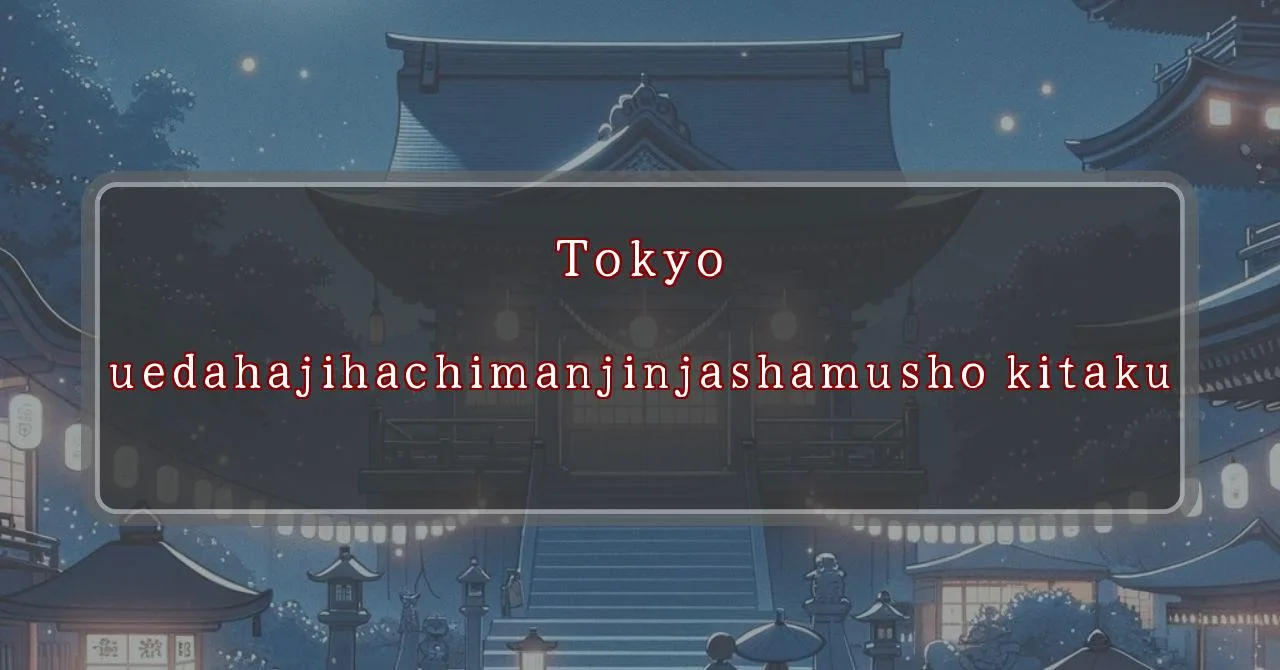Enchanting lights illuminate the night at Uedabata Hachimangu Shrine
Basic Information
Uedabata Hachimangu Shrine is a Shinto shrine located in Kita Ward, Tokyo, Japan. It is dedicated to the god Hachiman, the god of war and archery.
- Address: 4-18-1 Tabata, Kita-ku, Tokyo 114-0014, Japan
- Phone Number: 03-3828-2798
- Access: 8-minute walk from JR Tabata Station’s south exit
- Festival Days: August 4th and 5th, 2024
Main Events and Attractions of the Festival
The Uedabata Hachimangu Shrine Festival is a two-day festival held annually on August 4th and 5th. The festival features a variety of events and attractions, including:
Mikoshi Procession
The highlight of the festival is the mikoshi procession, which takes place on both days of the festival. A mikoshi is a portable shrine that is carried through the streets by a team of people. The mikoshi of Uedabata Hachimangu Shrine is particularly large and heavy, and it is carried by a team of over 100 people.
Bon Odori Dance
Another popular attraction at the festival is the bon odori dance. Bon odori is a traditional Japanese folk dance that is performed during the Obon festival, which is a time to honor the spirits of the dead. The bon odori dance at Uedabata Hachimangu Shrine is performed by a group of local dancers, and visitors are also welcome to join in.
Food Stalls
There are also a number of food stalls at the festival, selling a variety of traditional Japanese foods, such as yakitori, takoyaki, and okonomiyaki. There are also a number of games and activities for children, such as goldfish scooping and ring toss.
Fireworks Display
The festival concludes with a fireworks display on the evening of August 5th. The fireworks are launched from a nearby park, and they can be seen from all over the area.
angu Shrine is dedicated to the god Hachiman, the god of war and archery. Hachiman is also revered as the protector of warriors and the patron deity of the Minamoto clan, which ruled Japan during the Kamakura period (1185-1333). As such, Uedabata Hachimangu Shrine is a popular place for people to pray for victory in battle, success in business, and good luck in general.
Origin and History
The origins of Uedabata Hachimangu Shrine are unknown, but it is believed to have been founded sometime during the Kamakura period. The shrine was originally located in a different part of Kita Ward, but it was moved to its current location in 1658. The shrine was destroyed by fire in 1945, but it was rebuilt in 1951.
Tips and Notes for Visitors
- The festival is very popular, so it is important to arrive early to get a good spot to watch the mikoshi procession and the fireworks display.
- There are a number of food stalls at the festival, so you can enjoy a variety of traditional Japanese foods.
- The festival is held in a residential area, so please be respectful of the local residents.
Parking Information
There is no parking lot at Uedabata Hachimangu Shrine, but there are a number of coin-operated parking lots in the surrounding area.
Popular Stalls and Food Carts in Recent Years
| Type of Stall | Description |
|---|---|
| Takoyaki | A staple at Japanese festivals. Characterized by a crispy outside and a creamy inside. |
| Jaga Butter | A simple yet popular snack of hot potatoes lavishly topped with melted butter. |
| Baby Castella | Small castella cakes, sweet and fluffy treats enjoyed by children and adults alike. |
| Grilled Ayu with Salt | Fresh ayu fish grilled whole with salt, a savory taste of Japanese summer. |
| Shaapin | A unique gourmet item influenced by foreign cuisine, with a chewy skin wrapping the filling. |
| Okonomiyaki | A Japanese grilled dish where you often choose your own ingredients for a personalized flavor. |
| Cotton Candy | A fluffy, sweet snack that’s extremely popular with children. |
| Chocolate Banana | A banana coated in chocolate, a fun and visually appealing dessert. |
| Kushiyaki | Various types of ingredients skewered and grilled, an easy-to-enjoy snack. |
| Yakisoba | Fried noodles mixed with a special sauce, a fast food favorite in Japan. |



